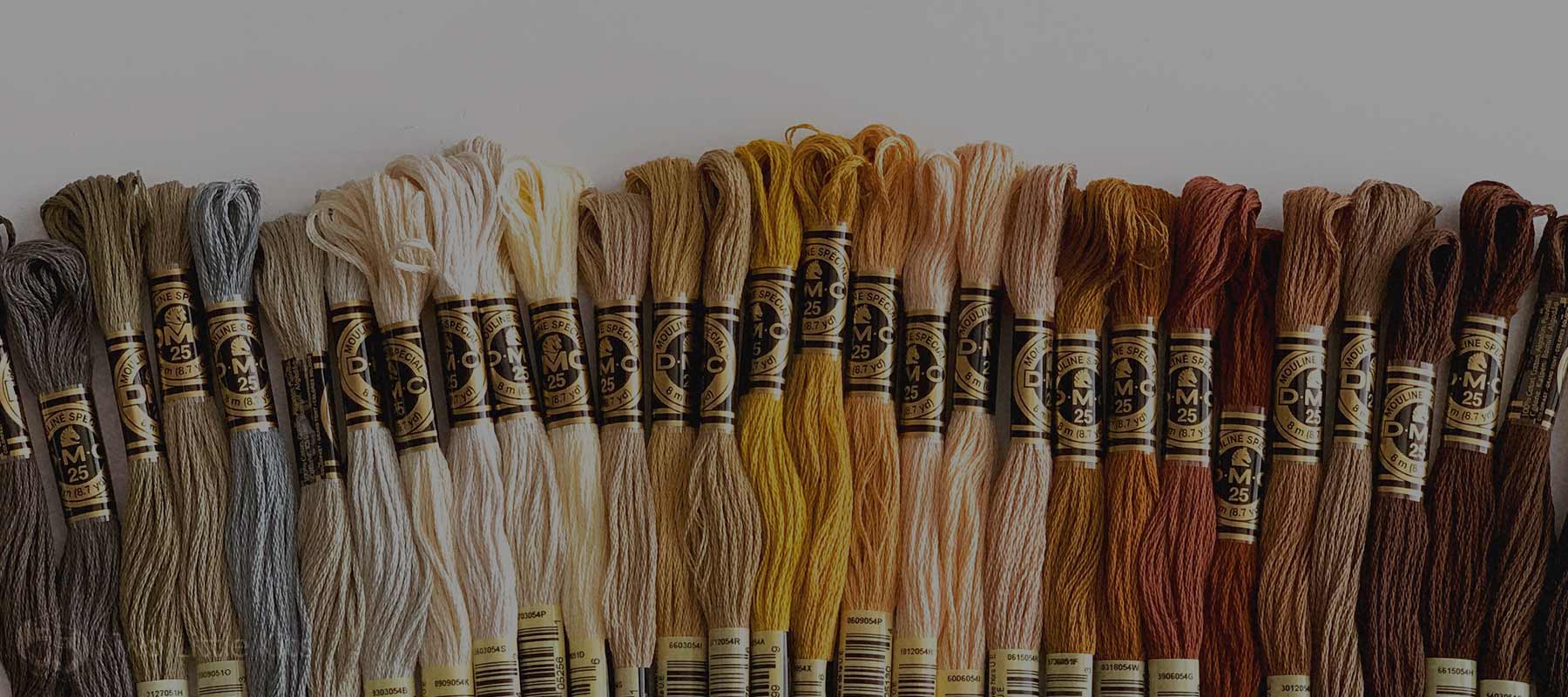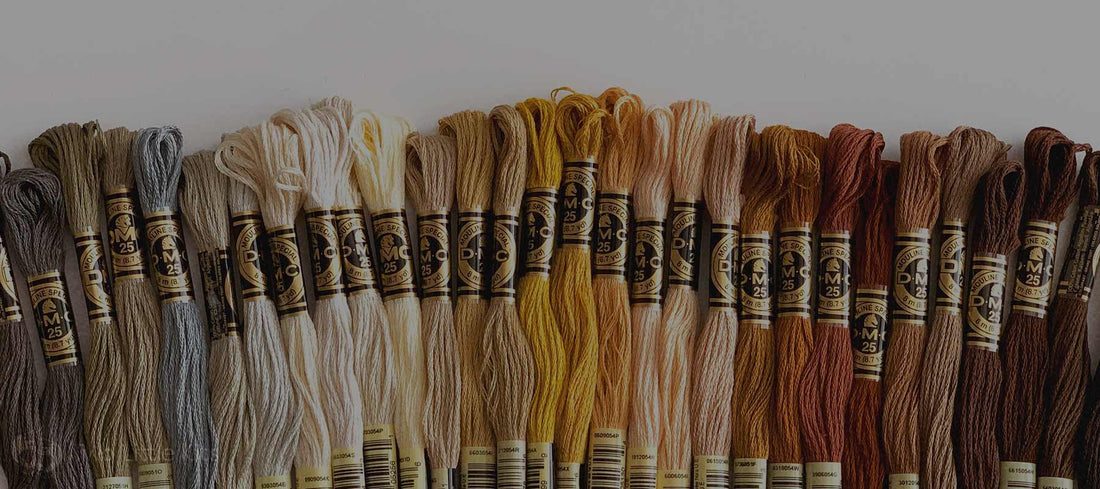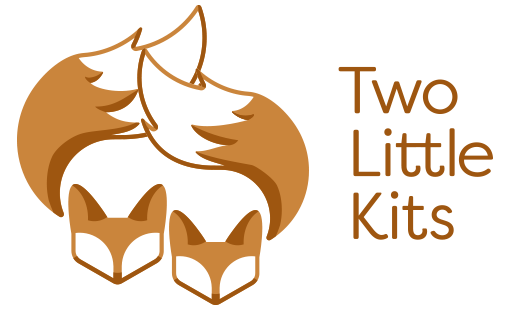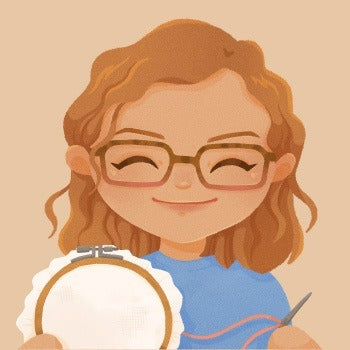

Terms & Acronyms for Cross-Stitch and Embroidery
Stitching Decoded: Your Guide to the Lingo
As a cross-stitch enthusiast, you’re probably familiar with most of the terminology that pops up in Facebook groups, Flosstube videos or even right here on my website! But every now and then, you might come across a few acronyms or quirky terms that leave you scratching your head. Don't worry, you're not alone.
To help you navigate the wonderful world of cross-stitch/embroidery jargon, I've put together this comprehensive list of terms. Ever wondered why people keep mentioning frogs in their stitching conversations, or why some are doing cross-country? You’re about to find out! Let's dive in and demystify these stitchy words together.
Feel free to contact me and request something gets added if you think it's relevant. I'm all for helping the community!
- Term
-
Definition
- Aida
-
Aida is the go-to fabric for most cross-stitch projects, favored for its easy-to-see squares. Popular brands include DMC, Zweigart, and Charles Craft. The fabric is woven evenly to create a grid pattern, which helps in guiding your stitches. Common counts, or the number of squares per inch, are 14 and 16. (See Count below for more details.)
- Backstitch
-
Backstitch is a technique used to outline parts of a cross-stitch design, usually in a contrasting color. This method adds definition and detail, making the pattern stand out more vividly.
- BAP
-
Big Ass Project
- Beads
-
Beads can be added to your cross-stitch project to enhance its texture and visual interest. They bring extra color and dimension, transforming a flat design into something more dynamic.
- Blending
-
Blending, also known as Tweeding, involves using two or more different colored threads in the same needle to create a unique shade. By combining strands, you can achieve subtle color transitions and a rich, layered effect in your design.
- Bobbin
-
A small plastic or paper shape you can wind & hold your thread onto. For some people, it allows for easier thread storage.
- Confetti
-
Confetti refers to single stitches of various colors scattered throughout a design, resembling tiny bits of confetti. These stitches often add intricate details but can be a bit challenging to manage due to their scattered placement.
- Chart
-
A chart is the cross-stitch pattern you follow while stitching. It serves as a visual guide, showing where each stitch and color goes in your project.

- Count
-
The term “count” refers to the number of fabric squares (or holes) per inch. For example, "14 count" means there are 14 squares per inch on the fabric. This number indicates the size of the stitches; a higher count results in smaller stitches.
- Counted Cross-Stitch
-
Counted Cross-Stitch is a technique where you work on plain fabric using a printed or digital pattern as a guide. This method helps you accurately place each stitch without a pre-printed design on the fabric.
- Cross-Country
-
Cross-Country stitching involves using a single color thread continuously across different sections of a pattern. Instead of finishing each thread section separately, you travel across the fabric, similar to how a cross-country route might meander across a landscape.
- Cross-Stitch Sampler
-
A traditional type of cross-stitch design that features a variety of motifs, alphabets, or decorative borders, often (or historically) stitched to practice different techniques.
- Danish Method
-
A form of stitching where you complete only half of each cross-stitch before moving onto the next stitch. Once a row has been completed this way, you go back and complete the top stitches.
See also: English Method
- DMC
-
DMC is a leading brand of embroidery and cross-stitch thread (floss), renowned for its vast color range and quality. All Two Little Kits patterns use DMC flosses in the patterns.
- English Method
-
A form of stitching where you complete each cross-stitch in full before moving onto the next stitch.
See also: Danish Method
- Evenweave
-
Evenweave is a type of fabric commonly used for cross-stitch. It's woven with threads that are all the same thickness, providing a uniform appearance. This fabric is often worked over two threads, allowing for more detailed designs.
- Fabric
-
Fabric is the base material onto which you stitch your design. Common types include Aida, Evenweave, and Linen, each offering a different texture and level of ease for stitching.
- Floss
-
Floss is the thread used in cross-stitch projects. Brands like DMC offer a wide range of floss colors and textures. The term "floss" is often interchangeable with "thread."
Most commonly, cross-stitch uses 6-stranded cotton floss to make their pieces. But rules are meant to be broken, sometimes!
- Floss Balm
-
aka: "Thread Conditioner" - This is a substance similar in consistency as lip balm, that you run your floss strand(s) through to condition it. It helps to prevent snags, tangles, fraying and such.
- Frog / Frogging
-
Frogging refers to the process of removing stitches when a mistake is made. The term is playfully derived from the frog's sound, "ribbit," which resembles "rip it," indicating you need to 'rip out' stitches.

The start of frogging some work. - Fractional Stitches
-
Fractional stitches are used to create smoother edges in designs with curves, as opposed to full stitches that create sharp corners. These stitches occupy only part of a fabric square, offering more precision.
- French Knot
-
A French Knot is a small knot used in cross-stitch to add details, like the eyes of an animal or the center of a flower. It creates a raised dot effect that adds texture and interest.
- Full Stitches
-
Full stitches refer to the traditional cross-stitch method where each stitch fills an entire fabric square. This is the standard stitch used in most patterns, unlike fractional stitches, which cover only part of a square.
- FFO
-
Finally Finished Object, Fully Finished Object, or Finally Framed Object - A term used to celebrate completing and finishing a project, whether framed or simply complete.
- FO
-
Finished Object - A shorter version of FFO that means the same thing; a completed project.
- Fray Check
-
A liquid sealant applied to the edges of fabric to prevent fraying, commonly used on Aida, linen, and evenweave before stitching.
- FS
-
Forgotten Stash - Refers to cross-stitch supplies or kits that have been stored away and forgotten.
- GA
-
Gentle Arts Thread - A popular brand known for its hand-dyed threads with beautiful, subtle color variations.
- Gridding
-
The process of marking a fabric with a temporary grid (using a water-soluble/heat-erasable pen or thread) to match the pattern’s layout, making it easier to count stitches accurately.
- Half Stitch
-
A Half Stitch, also known as a Tent Stitch, involves making only one diagonal stitch across the fabric square, as opposed to two for a full cross-stitch. This technique is often used for shading or detail.
- Hand-Dyed Floss
-
Embroidery thread that has been dyed by hand, often creating subtle colour variations and unique blends. Popular brands include Weeks Dye Works and The Gentle Art.
- Haul
-
A Haul is when you go on a shopping spree and acquire a large amount of cross-stitch supplies, whether online or in person. Showing off your "haul" is a common practice among stitchers.
- Jobelan
-
A type of Evenweave fabric made from cotton and modal. It is softer than Aida and provides a smooth surface for detailed stitching.
- Key
-
Also known as a Legend; The reference guide included with a cross-stitch pattern that shows which thread colours correspond to each symbol on the chart.
- Kit
-
A cross-stitch kit includes everything you need to start a project: fabric, threads, needle, instructions, and a full pattern. It’s a complete package for beginners or anyone wanting a convenient start.
- Legend
-
Also known as a Key; The reference guide included with a cross-stitch pattern that shows which thread colours correspond to each symbol on the chart.
- Linen
-
Linen is made from 100% linen thread and woven similarly to Evenweave fabric. It has a natural, traditional appearance but can be more challenging to stitch on due to its texture.
- Loop Start
-
A method for starting a new thread without typical anchoring or using a knot. It uses a folded strand of floss to create a secure, tidy beginning.
- Needle Threader
-
A handy tool designed to help pull thread through a needle’s eye, making threading quicker and easier—especially for small-eyed needles or people with lower dexterity.
- Needleminder
-
A Needleminder is a small, decorative magnetic item attached to your cross-stitch fabric. It securely holds your needle when it's not in use, preventing it from getting lost.
- Needlepoint
-
Needlepoint, also called Tapestry, is a form of embroidery using yarn stitched through a mesh canvas. It's similar to cross-stitch but typically larger and more structured.
- Needle's Eye
-
The small hole at the top of a needle where the thread is inserted. The size of the eye varies depending on the needle type and size.
- OAP
-
Old Abandoned Project
- ONS
-
Online Needlecraft Shop
- OOP
-
Out Of Print
- ORT
-
Old Ratty Threads or Orphaned Random Threads - The term "ort" can also refer to scraps, such as leftover thread pieces from projects.

- PAD
-
Project All Done
- Parking
-
Parking is a technique where multiple needles with different threads are used simultaneously, making it easier to manage large projects with multiple colors. This method avoids frequent re-threading.
- PHD
-
Project Half Done
- PFO
-
Pulled From Oblivion - Referring to a project that hasn't been worked on for a long time and is now being revisited and continued.
- Q-Snap
-
A Q-Snap is a type of frame used to keep your fabric taut while cross-stitching. It snaps together to form a sturdy frame that holds the fabric in place.
- Railroading
-
Railroading is a stitching technique where the needle is passed between two strands of thread to create a flatter and more uniform stitch. This method -for some people- improves the appearance of the finished work.
- RAK
-
Random Act of Kindness - Where one stitcher might gift or purchase a kit or pattern for another. It’s a lovely way to share the joy of cross-stitching and is often found in Facebook groups.
- RR
-
Round Robin - A collaborative project where a piece is passed from one stitcher to another until it's completed. Each participant adds their work, creating a collective creation.
- SAL
-
Stitch-Along - An event where stitchers work on the same project simultaneously. Sometimes, it’s a mystery where the theme is a secret, and the pattern is released in parts over time.
- SINS
-
Stuff I’ll Never Stitch
- SIP
-
Stitch-In-Progress
- Skein
-
A Skein is how embroidery thread is packaged, usually in 8-meter lengths. It's wound into loops with a small paper label that details the brand and color code.
- Snips
-
A different kind of scissors that are spring loaded, which you squeeze together to cut (usually floss, not fabric).

- Soluble Canvas
-
A special type of gridded fabric that dissolves in water, allowing you to cross-stitch onto non-traditional fabrics like clothing or tote bags.
- Stash
-
Stash refers to your collection of cross-stitch supplies, including threads, patterns, fabrics, and more, that you're not actively using. It can sometimes get quite extensive—so watch out for that stash overload!
- Stitchy Buddy
-
A Stitchy Buddy is a pet (or person) that keeps you company while you stitch, often by snuggling nearby or even sitting on your lap as you work.

One of my stitchy buddies "helping" me work! - Stitching Over 2 or 1 over 2
-
Stitching 1 Over 2 is a technique used on Evenweave or Linen fabrics, where you skip one hole before placing the stitch. This approach contrasts with Aida fabric, where you typically stitch within each hole.
- Tapestry
-
Tapestry, also known as Needlepoint, is an embroidery technique where yarn is used to stitch through a mesh canvas. It provides a larger and more structured design compared to traditional cross-stitch.
- Thread
-
See Floss.
- Thread Conditioner
-
aka: "Floss Balm" - This is a substance similar in consistency as lip balm, that you run your floss strand(s) through to condition it. It helps to prevent snags, tangles, fraying and such.
- Tweeding
-
Tweeding, also known as Blending, involves using multiple thread colors in the same needle to blend them together while stitching. This technique creates a gradual color transition effect in your design.
- UFO
-
Unfinished Object
- Waste Canvas
-
Waste Canvas is used for stitching designs onto fabric without a grid, such as clothing. It acts as a guide and can be removed afterward by washing or pulling out each thread, leaving only the stitched design.
- Waste Knot Start
-
A way to start your thread. Tie a knot at the end of your thread, and insert the thread from the front to the back a few stitches into the line of stitches you wish to create. Start stitching as planned. Snip off the knot once done and the thread should be held by your new stitches.
- WDW
-
Weeks Dye Works - A renowned brand of cross-stitch thread known for its high-quality, hand-dyed fibers.
- WIP
-
Work-In-Progress
- WTF
-
Waiting To Finish
- XStitch
- A short-hand way of writing "cross-stitch".
Last addition: 9th of March, 2025.
Total Terms: 74.
Did I Miss Anything? Let Me Know!
I hope this list helps you navigate the world of cross-stitch with confidence! Whether you're a beginner or a seasoned stitcher, there's always something new to learn.
If you come across a term that should be included or have a favourite stitchy phrase I’ve missed, I’d love to hear from you! Send me a message and let’s make this list as helpful as possible for fellow stitchers.
And if you found this page useful, feel free to share it with your stitchy friends! 😊 Happy stitching!




